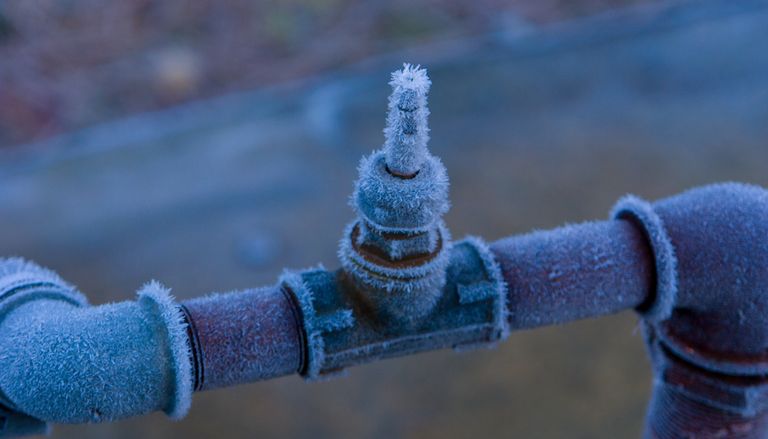Right here underneath you can locate a good deal of brilliant answers in relation to Winter Plumbing Precautions: Preventing Frozen Pipes.

Cold weather can wreak havoc on your pipes, especially by freezing pipelines. Right here's how to stop it from happening and what to do if it does.
Introduction
As temperatures drop, the threat of icy pipes boosts, possibly leading to pricey repairs and water damages. Understanding just how to stop icy pipes is vital for home owners in cold environments.
Prevention Tips
Protecting vulnerable pipelines
Wrap pipelines in insulation sleeves or use warm tape to secure them from freezing temperatures. Focus on pipelines in unheated or exterior areas of the home.
Home heating techniques
Maintain interior rooms adequately heated up, specifically areas with pipes. Open up closet doors to enable cozy air to distribute around pipes under sinks.
Just how to identify frozen pipes
Seek lowered water circulation from taps, uncommon smells or sounds from pipelines, and noticeable frost on revealed pipelines.
Long-Term Solutions
Architectural adjustments
Think about rerouting pipes far from exterior walls or unheated areas. Include added insulation to attic rooms, cellars, and crawl spaces.
Updating insulation
Buy top notch insulation for pipelines, attics, and walls. Appropriate insulation aids maintain constant temperature levels and minimizes the threat of frozen pipelines.
Protecting Exterior Plumbing
Garden tubes and outdoor faucets
Separate and drain garden tubes prior to winter season. Mount frost-proof spigots or cover outside taps with shielded caps.
Recognizing Icy Pipes
What causes pipelines to freeze?
Pipelines ice up when exposed to temperature levels listed below 32 ° F (0 ° C) for prolonged periods. As water inside the pipelines ices up, it broadens, taxing the pipeline walls and possibly triggering them to break.
Risks and damages
Icy pipelines can cause water supply interruptions, building damage, and pricey fixings. Ruptured pipelines can flooding homes and cause comprehensive architectural damages.
Indications of Frozen Pipeline
Recognizing icy pipelines early can stop them from breaking.
What to Do If Your Pipelines Freeze
Immediate actions to take
If you believe icy pipelines, maintain taps open to eliminate stress as the ice melts. Use a hairdryer or towels taken in hot water to thaw pipes slowly.
Conclusion
Protecting against frozen pipelines calls for aggressive procedures and quick actions. By understanding the causes, indications, and safety nets, house owners can safeguard their plumbing throughout cold weather.
5 Ways to Prevent Frozen Pipes
Drain Outdoor Faucets and Disconnect Hoses
First, close the shut-off valve that controls the flow of water in the pipe to your outdoor faucet. Then, head outside to disconnect and drain your hose and open the outdoor faucet to allow the water to completely drain out of the line. Turn off the faucet when done. Finally, head back to the shut-off valve and drain the remaining water inside the pipe into a bucket or container. Additionally, if you have a home irrigation system, you should consider hiring an expert to clear the system of water each year.
Insulate Pipes
One of the best and most cost-effective methods for preventing frozen water pipes is to wrap your pipes with insulation. This is especially important for areas in your home that aren’t exposed to heat, such as an attic. We suggest using foam sleeves, which can typically be found at your local hardware store.
Keep Heat Running at 65
Your pipes are located inside your walls, and the temperature there is much colder than the rest of the house. To prevent your pipes from freezing, The Insurance Information Institute suggests that you keep your home heated to at least 65 degrees, even when traveling. You may want to invest in smart devices that can keep an eye on the temperature in your home while you’re away.
Leave Water Dripping
Moving water — even a small trickle — can prevent ice from forming inside your pipes. When freezing temps are imminent, start a drip of water from all faucets that serve exposed pipes. Leaving a few faucets running will also help relieve pressure inside the pipes and help prevent a rupture if the water inside freezes.
Open Cupboard Doors
Warm your kitchen and bathroom pipes by opening cupboards and vanities. You should also leave your interior doors ajar to help warm air circulate evenly throughout your home.

As an enthusiastic person who reads on Helpful Tips to Prevent Frozen Pipes this Winter, I was thinking sharing that excerpt was a good thing. Sharing is good. Helping people is fun. Bless you for your time. Kindly come visit our site back soon.
Click Here